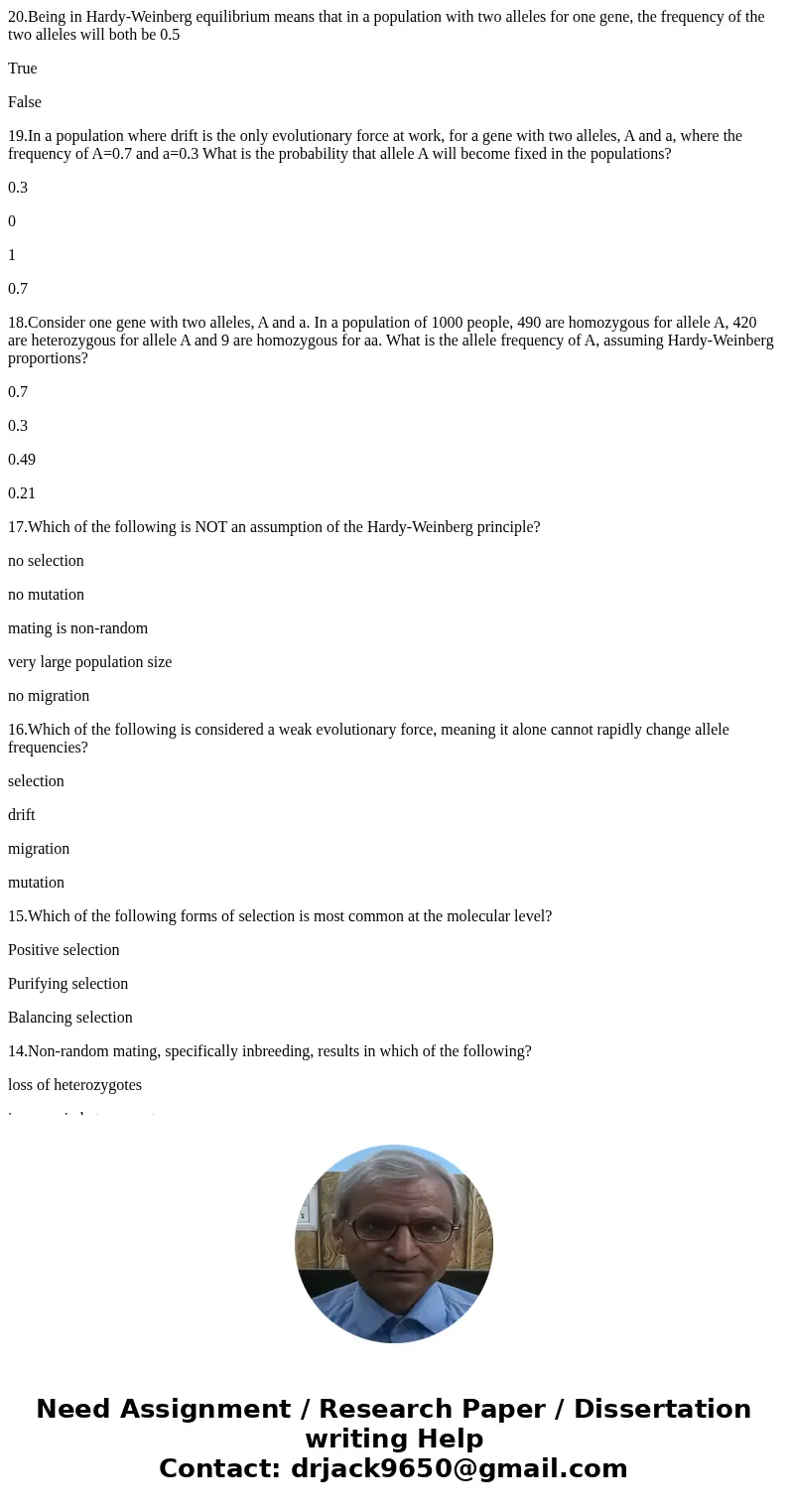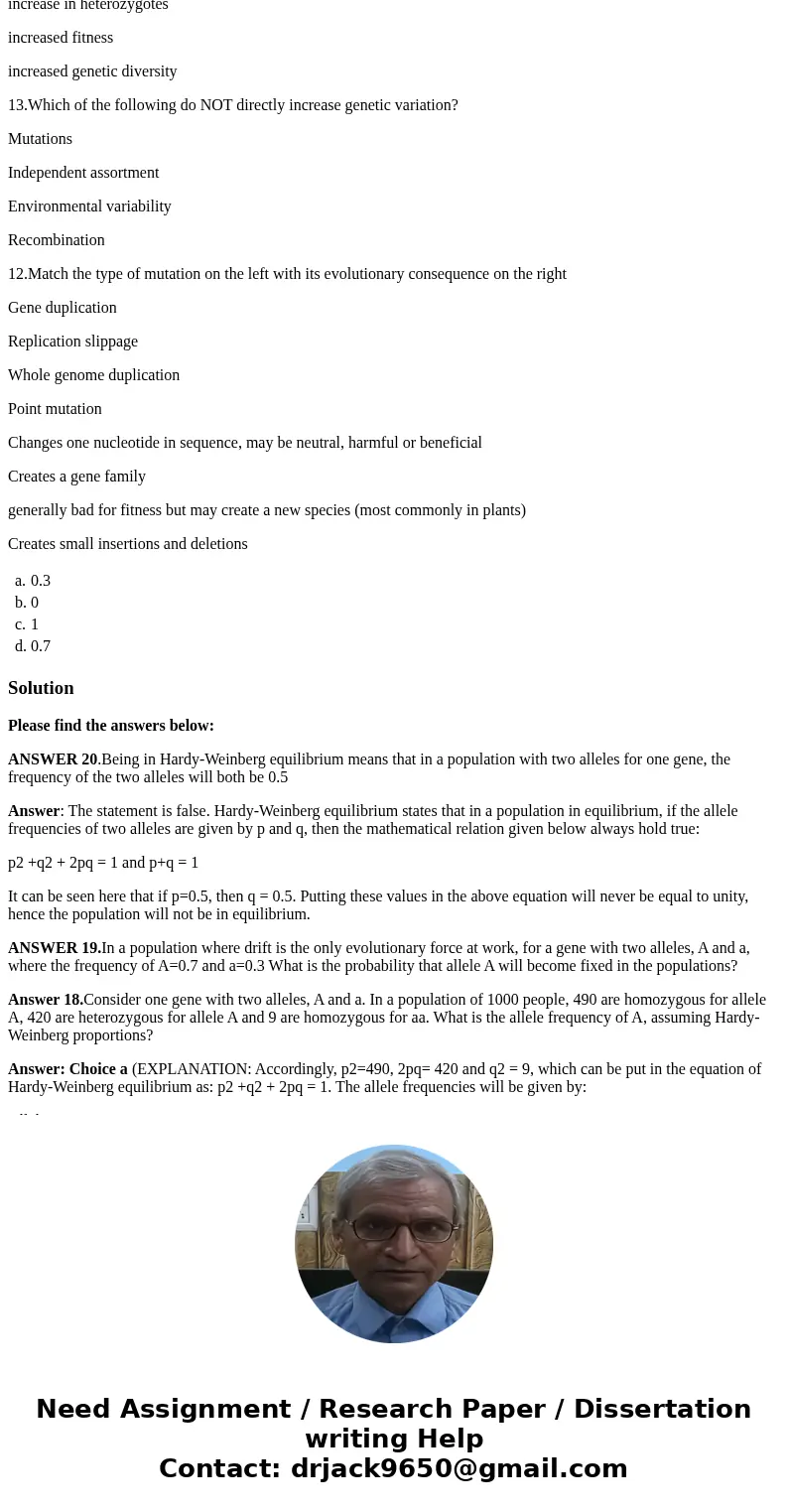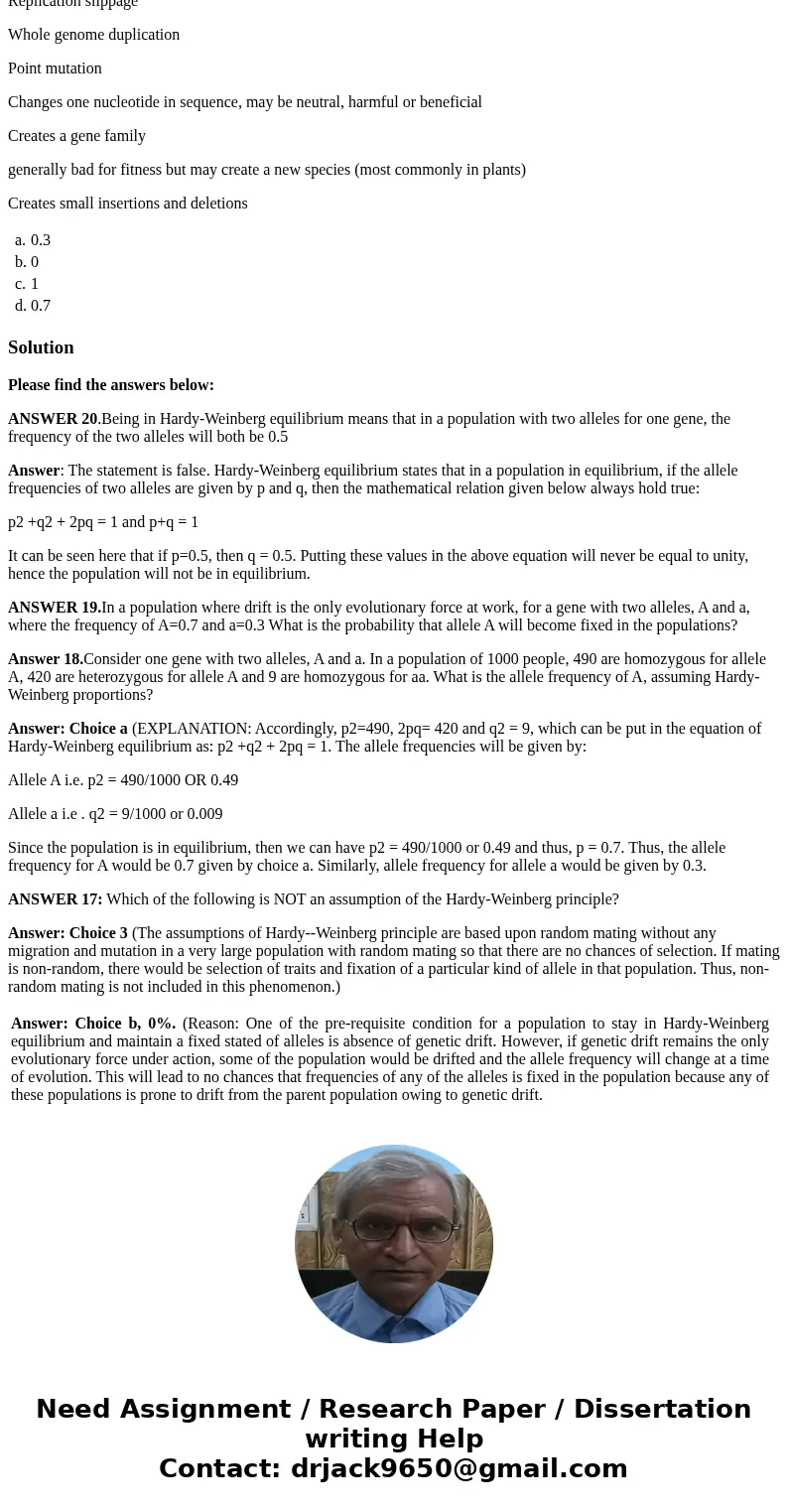20Being in HardyWeinberg equilibrium means that in a populat
20.Being in Hardy-Weinberg equilibrium means that in a population with two alleles for one gene, the frequency of the two alleles will both be 0.5
True
False
19.In a population where drift is the only evolutionary force at work, for a gene with two alleles, A and a, where the frequency of A=0.7 and a=0.3 What is the probability that allele A will become fixed in the populations?
0.3
0
1
0.7
18.Consider one gene with two alleles, A and a. In a population of 1000 people, 490 are homozygous for allele A, 420 are heterozygous for allele A and 9 are homozygous for aa. What is the allele frequency of A, assuming Hardy-Weinberg proportions?
0.7
0.3
0.49
0.21
17.Which of the following is NOT an assumption of the Hardy-Weinberg principle?
no selection
no mutation
mating is non-random
very large population size
no migration
16.Which of the following is considered a weak evolutionary force, meaning it alone cannot rapidly change allele frequencies?
selection
drift
migration
mutation
15.Which of the following forms of selection is most common at the molecular level?
Positive selection
Purifying selection
Balancing selection
14.Non-random mating, specifically inbreeding, results in which of the following?
loss of heterozygotes
increase in heterozygotes
increased fitness
increased genetic diversity
13.Which of the following do NOT directly increase genetic variation?
Mutations
Independent assortment
Environmental variability
Recombination
12.Match the type of mutation on the left with its evolutionary consequence on the right
Gene duplication
Replication slippage
Whole genome duplication
Point mutation
Changes one nucleotide in sequence, may be neutral, harmful or beneficial
Creates a gene family
generally bad for fitness but may create a new species (most commonly in plants)
Creates small insertions and deletions
| a. | 0.3 | |
| b. | 0 | |
| c. | 1 | |
| d. | 0.7 |
Solution
Please find the answers below:
ANSWER 20.Being in Hardy-Weinberg equilibrium means that in a population with two alleles for one gene, the frequency of the two alleles will both be 0.5
Answer: The statement is false. Hardy-Weinberg equilibrium states that in a population in equilibrium, if the allele frequencies of two alleles are given by p and q, then the mathematical relation given below always hold true:
p2 +q2 + 2pq = 1 and p+q = 1
It can be seen here that if p=0.5, then q = 0.5. Putting these values in the above equation will never be equal to unity, hence the population will not be in equilibrium.
ANSWER 19.In a population where drift is the only evolutionary force at work, for a gene with two alleles, A and a, where the frequency of A=0.7 and a=0.3 What is the probability that allele A will become fixed in the populations?
Answer 18.Consider one gene with two alleles, A and a. In a population of 1000 people, 490 are homozygous for allele A, 420 are heterozygous for allele A and 9 are homozygous for aa. What is the allele frequency of A, assuming Hardy-Weinberg proportions?
Answer: Choice a (EXPLANATION: Accordingly, p2=490, 2pq= 420 and q2 = 9, which can be put in the equation of Hardy-Weinberg equilibrium as: p2 +q2 + 2pq = 1. The allele frequencies will be given by:
Allele A i.e. p2 = 490/1000 OR 0.49
Allele a i.e . q2 = 9/1000 or 0.009
Since the population is in equilibrium, then we can have p2 = 490/1000 or 0.49 and thus, p = 0.7. Thus, the allele frequency for A would be 0.7 given by choice a. Similarly, allele frequency for allele a would be given by 0.3.
ANSWER 17: Which of the following is NOT an assumption of the Hardy-Weinberg principle?
Answer: Choice 3 (The assumptions of Hardy--Weinberg principle are based upon random mating without any migration and mutation in a very large population with random mating so that there are no chances of selection. If mating is non-random, there would be selection of traits and fixation of a particular kind of allele in that population. Thus, non-random mating is not included in this phenomenon.)
| Answer: Choice b, 0%. (Reason: One of the pre-requisite condition for a population to stay in Hardy-Weinberg equilibrium and maintain a fixed stated of alleles is absence of genetic drift. However, if genetic drift remains the only evolutionary force under action, some of the population would be drifted and the allele frequency will change at a time of evolution. This will lead to no chances that frequencies of any of the alleles is fixed in the population because any of these populations is prone to drift from the parent population owing to genetic drift. |



 Homework Sourse
Homework Sourse